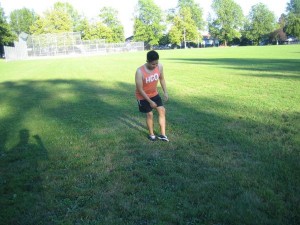A femoral bone contusion is basically a deep bruise or hematoma that involves the thighbone. These contusions of the femur can occur due to extreme blunt trauma or from the jamming of the femur at the knee joint which can occur if the individual landed in an awkward manner from a jump.
Bone contusions can result to deep, aching pain and often involve bruising and staining in the surrounding soft tissues. Rest, application of ice, light massage and careful stretching can encourage the femoral bone contusion to heal but can take weeks or months of recovery. It is best to consult a doctor if the individual has aching and swollen thigh. By enrolling in a first aid course today, you will be prepared to handle this injury.
What is a bone contusion?
A bone contusion refers to a damaged bone that is bleeding under the sturdy fibrous covering known as the periosteum. The injury causes the small blood vessels to rupture but the blood stays within the periosteum where it is hastily reabsorbed without any problems or lingering damage. These bone contusions can cause aching pain and inflammation and usually involves the bruising of the surrounding skin depending on the severity of the injury and if it was instigated by external or internal force. In rare circumstances, bleeding from bone contusions can solidify and develop bulging calluses of bone that can disrupt the movement of the muscles.

What is the femur?
The femur is a bone of the upper thigh which attaches the hip joint to the knee joint. Bone contusion of the femur occurs frequently than with other bones and typically caused by impact during sports. Soccer and football are high risk sports that causes impact trauma to the thigh while athletics and basketball can cause the jamming of the knee. It is important to note that the medial condyle of the distal femur is at risk for bruising once the femur and tibia becomes compressed or jammed.
Diagnosing and treatment for femoral bone contusions
It is important to note that a femoral bone contusion can be similar to other injuries which include knee sprains, fractures, and tendon rupture and meniscus tears. A diagnosis of the condition is made with an MRI or X-ray of the affected knee or femur. The treatment usually starts with the application of ice several times in a day to relieve the pain and inflammation. The individual should take a break from physical activity and rest.
Stretching
Resting the affected area is important but complete inactivity is not ideal. The individual should perform non-weight bearing, range of motion of exercises to the knee and hip joints as well as gentle extension of the quadriceps muscles to promote the flow of blood, stimulates the healing and prevents the muscles and joints from becoming tight and stiff.
